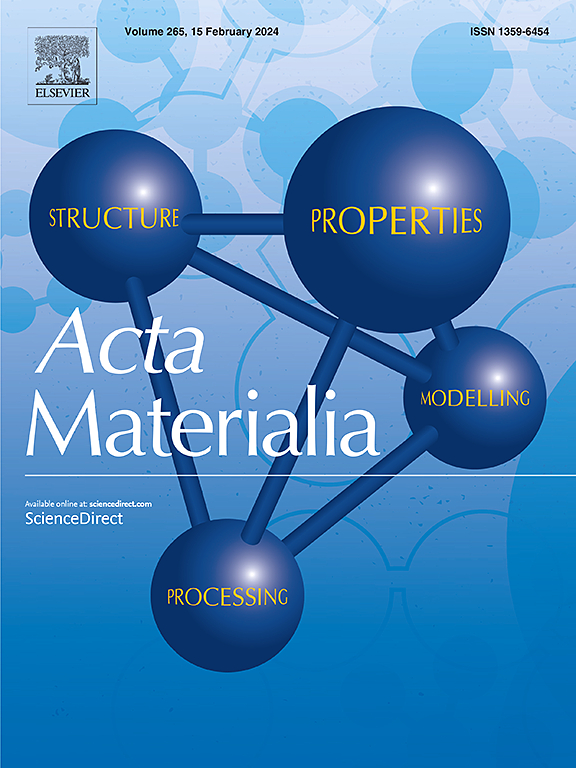Thermal conductivity degradation of silicon-ion-irradiated silicon carbide ceramics
IF 9.3
1区 材料科学
Q1 MATERIALS SCIENCE, MULTIDISCIPLINARY
引用次数: 0
Abstract
Silicon carbide (SiC) ceramics, fabricated by spark plasma sintering (SPS), were irradiated by 14 MeV silicon ions at 300 °C across a dose range of 0.01 to 1.00 displacements per atom (dpa). Thermal diffusivity and elastic modulus of the irradiated layers were measured using Transient Grating Spectroscopy (TGS), revealing significant diffusivity reduction even at 0.01 dpa. In-situ annealing of a 0.5 dpa sample showed diffusivity recovery starting just above the irradiation temperature, with a 2.5 % restoration after annealing at 712 °C, equivalent to approximately 26 % recovery in defect concentration. X-ray diffraction (XRD), Raman spectroscopy, and transmission electron microscopy (TEM) showed no phase transformations but indicated lattice expansion, local structural changes, and reduced elastic modulus with increasing radiation damage. The linear relationship between irradiation-induced defect thermal resistance and estimated swelling from lattice expansion, along with microscopy observations, suggest that radiation-induced defects below 1 dpa remain isolated or form small clusters <1 nm, consistent with black spot defects (BSD). Even at low concentrations, these defects significantly degrade the thermal conductivity of SiC.


硅离子辐照碳化硅陶瓷导热性能的研究
用火花等离子烧结(SPS)法制备的碳化硅(SiC)陶瓷,在300°C下,以14 MeV硅离子在0.01 ~ 1.00个位移/原子(dpa)的剂量范围内辐照。利用瞬态光栅光谱(TGS)测量辐照层的热扩散系数和弹性模量,发现即使在0.01 dpa下,扩散系数也显著降低。0.5 dpa样品的原位退火显示,扩散率从刚高于辐照温度开始恢复,712℃退火后恢复2.5%,相当于缺陷浓度恢复约26%。x射线衍射(XRD)、拉曼光谱(Raman)和透射电子显微镜(TEM)均未发现相变,但显示出晶格膨胀、局部结构变化和弹性模量随辐射损伤的增加而降低。根据显微镜观察,辐照缺陷热阻与晶格膨胀估计膨胀之间的线性关系表明,低于1 dpa的辐照缺陷保持孤立或形成1 nm的小团簇,与黑点缺陷(BSD)一致。即使在低浓度下,这些缺陷也会显著降低SiC的导热性。
本文章由计算机程序翻译,如有差异,请以英文原文为准。
求助全文
约1分钟内获得全文
求助全文
来源期刊

Acta Materialia
工程技术-材料科学:综合
CiteScore
16.10
自引率
8.50%
发文量
801
审稿时长
53 days
期刊介绍:
Acta Materialia serves as a platform for publishing full-length, original papers and commissioned overviews that contribute to a profound understanding of the correlation between the processing, structure, and properties of inorganic materials. The journal seeks papers with high impact potential or those that significantly propel the field forward. The scope includes the atomic and molecular arrangements, chemical and electronic structures, and microstructure of materials, focusing on their mechanical or functional behavior across all length scales, including nanostructures.
 求助内容:
求助内容: 应助结果提醒方式:
应助结果提醒方式:


